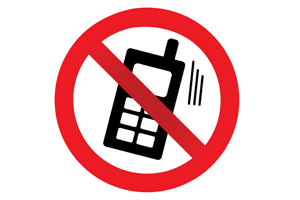In an age where mobile devices are ubiquitous, one must ponder: can modern technology be harnessed to counteract the distractions caused by these gadgets, particularly in sensitive environments? The realm of transportation, governed by the Department of Transportation (DOT), is increasingly confronted with the challenge of integrating technology designed to disable cell phones while ensuring the safety and efficiency of transportation systems.
The proliferation of mobile devices has transformed communication dynamics. However, this transformation is not without its drawbacks. One pressing concern arises in transportation settings, where the use of mobile devices can lead to catastrophic consequences. Texting while driving remains a significant hazard, resulting in a dire need for effective interventions. The DOT is investigating technologies that can disable cell phone functionality in vehicles, especially when they detect movement above a certain speed.
Imagine a scenario where a driver is on a highway, a phone rings, and their instinctive reaction is to reach for it. The momentary distraction could lead to devastating outcomes. Traditional methods to curb this behavior have included educational campaigns and stricter regulations, yet technology offers a more proactive approach. Employing systems that automatically disable call and text functionalities can potentially mitigate these risks.
However, a labyrinth of ethical and practical considerations exists. For one, how do we balance safety with individual liberties? The implementation of such technology could be perceived as an invasion of privacy. Moreover, what about emergencies? A stranded motorist, for instance, may find themselves unable to call for help. Thus, creating a technology that skillfully navigates these nuances becomes paramount.
Another consideration is the technological infrastructure required to support these systems. The DOT must evaluate the feasibility of integrating cell phone disabling technology with existing vehicles. Does this mean retrofitting older models, or will it only apply to newer cars equipped with advanced infotainment systems? The prospect of cooperation among automotive manufacturers, technology firms, and regulatory bodies will be essential to develop solutions that are both effective and widely adopted.
In addition, the DOT may face resistance from various stakeholders. Advocacy groups might challenge the idea, arguing that disabling a phone could lead to broader societal implications. Furthermore, there are questions about accountability—if accidents still happen while the technology is engaged, who will bear the responsibility? It becomes clear that while the drive to enhance road safety through technological means is admirable, the road to implementation is fraught with complexity.
In conclusion, while the prospect of disabling cell phones in transportation contexts is enticing, it necessitates thorough deliberation. The potential benefits must be weighed against moral, social, and practical dilemmas. As we wade further into the waters of technological innovation, one must ask: will we develop a solution that embraces safety while respecting the rights of individuals, or will we find ourselves caught in a catch-22?
